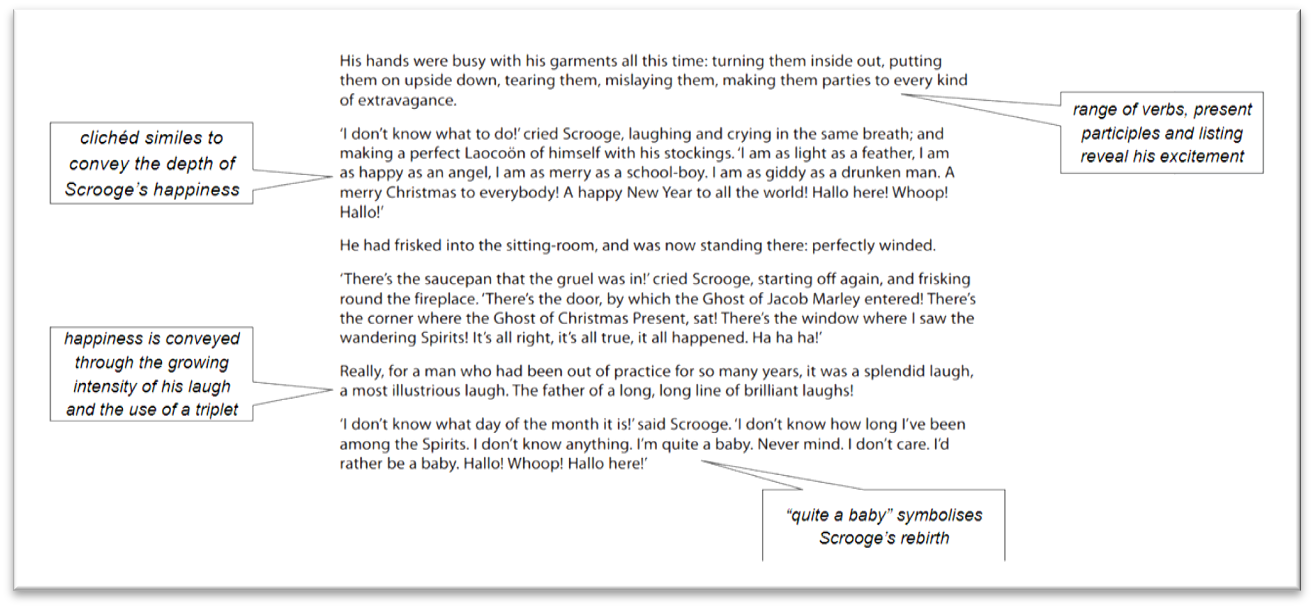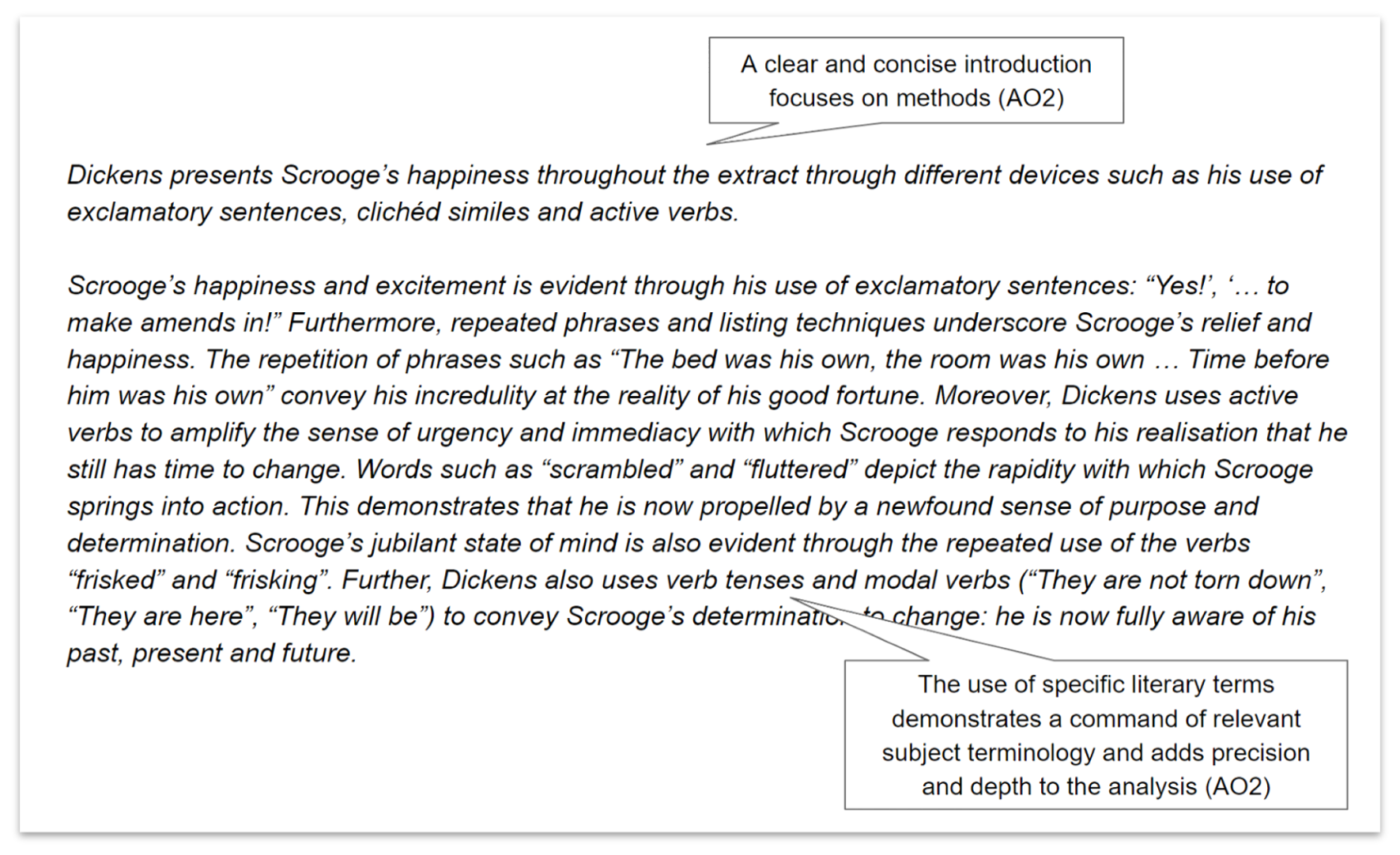The following task is taken from the May 2018 Edexcel GCSE English Literature Paper 2, and is based on A Christmas Carol. However, the commentary is designed to highlight how to structure your response and integrate all aspects of the assessment objectives, and therefore the model could be applied to any of the 19th-century novels.
A close reading is an in-depth, careful analysis of a short extract. In part (a) you are required to give a mеticulous and in-dеpth analysis of thе languagе, form and structure usеd in thе extract from the novel you have studied.
The illustration below shows an example of how you might start annotating the extract.

We will now explore how you can create an informed and coherent argument using an example of a question from Section A. First, let’s read through the question below:
|
Question:
Explore how Dickens presents Scrooge’s happiness in this extract.
Give examples from the extract to support your ideas.
|
When structuring your essay, the most important thing to do is to have a clear introductory sentence (also known as a “topic sentence”) at the beginning of every paragraph. This topic sentence must make one clear point that is directly related to the focus of the question. Here are a couple of great topic sentences that explore how Dickens presents Scrooge’s happiness.
|
Question focus
|
How Dickens presents Scrooge’s happiness
|
|
Topic sentence
|
Dickens uses a series of clichéd similes to convey the depth of Scrooge’s happiness and excitement.
|
|
Topic sentence
|
In the final paragraph, Dickens portrays Scrooge as breathless to show that his happiness is so extreme that it is physically overwhelming.
|
When writing the rest of your paragraph, all your points then should relate to your topic sentence. It is also a great idea to maintain a focus on the key term of the question (here, “happiness”) throughout your argument.
|
Question focus
|
How Dickens presents Scrooge’s happiness
|
|
Topic sentence
|
In this extract, Dickens uses a series of clichéd similes to convey the depth of Scrooge’s happiness and excitement.
|
|
Analysis
|
Scrooge describes himself as “light as a feather”, “happy as an angel”, “merry as a school-boy” and “giddy as a drunken man”. The use of clichéd language adds humour to the extract while also demonstrating the exuberance of Scrooge’s happiness. Scrooge’s happiness is also conveyed by the growing intensity of his laugh and the triplet: “splendid laugh”, “illustrious laugh”, “The father of a long, long line of brilliant laughs!” This is used to signify the escalating intensity and magnitude of his joy.
|






